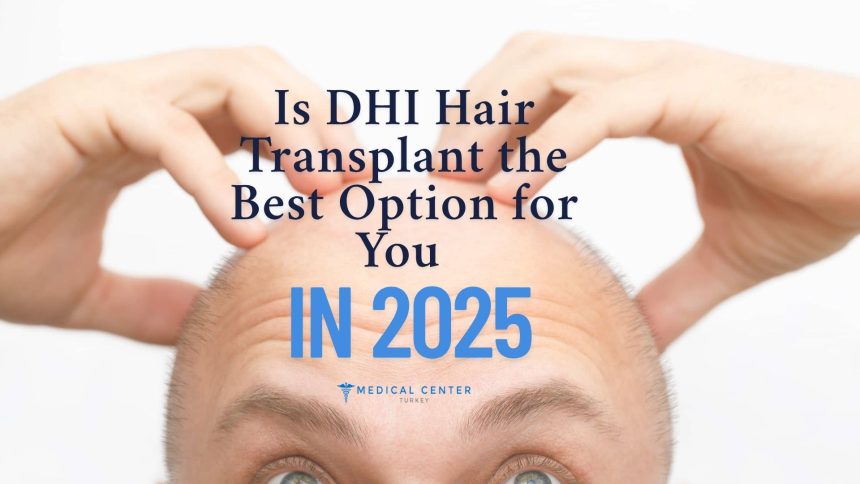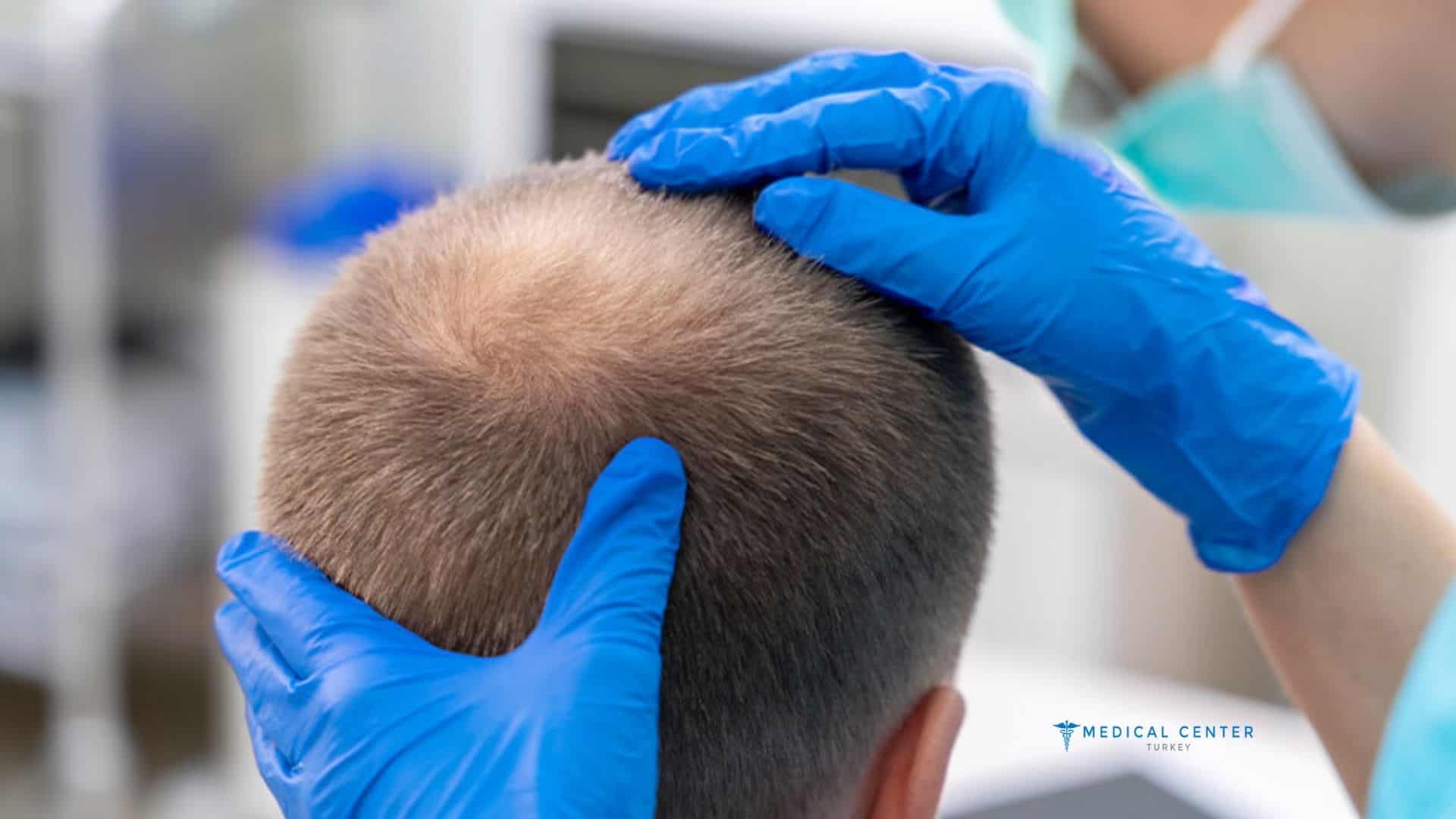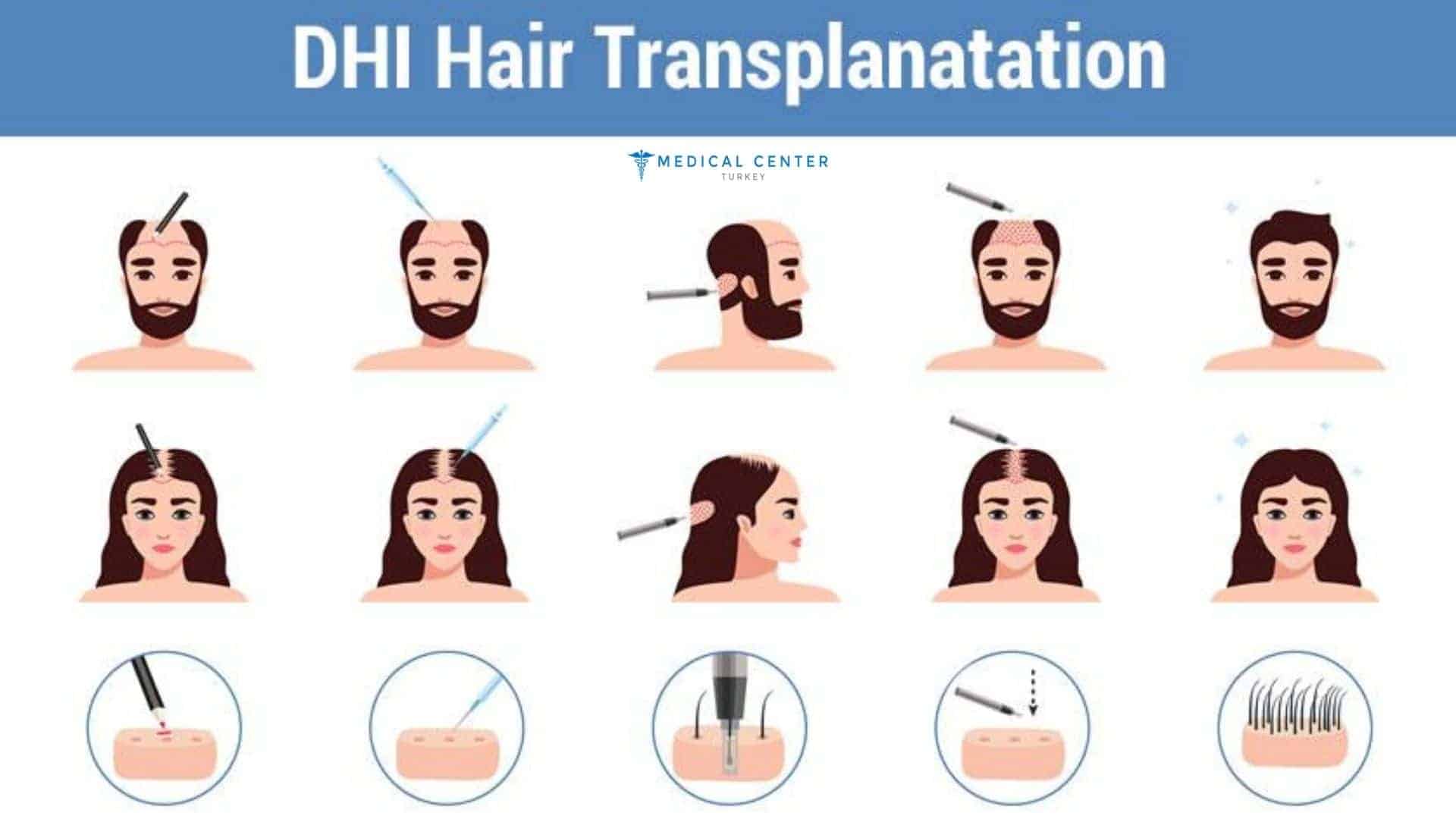Is DHI Hair Transplant the Best Option for You in 2025?
Is DHI Hair Transplant the Best Option for You in 2025 is an article that aims to give you all the information you do not know about Is DHI Hair Transplant the Best Option for You in 2025 and more. We kindly shared the main headings with you;
What makes DHI hair transplant different from other techniques like FUE or FUT in 2025?
DHI (Direct Hair Implantation) stands out in 2025 as one of the most advanced and precise hair transplant methods available. While it falls under the broader umbrella of FUE (Follicular Unit Extraction), DHI introduces a more refined, innovative implantation technique that distinguishes it from both traditional FUE and FUT (Follicular Unit Transplantation).
The most notable difference lies in the use of the Choi Implanter Pen, a specialized tool that allows for simultaneous creation of recipient sites and implantation of hair follicles. Unlike FUE, which involves extracting follicles and then manually placing them into incisions made on the scalp, DHI enables the surgeon to insert follicles directly into the scalp without prior channel opening. This means less trauma to the skin, reduced bleeding, and shorter healing time.
Compared to FUT, where a strip of scalp is surgically removed, DHI is minimally invasive, leaving no linear scars and requiring significantly less downtime. This makes it particularly attractive to those who prefer to wear short hairstyles or are concerned about visible scarring.
Another key benefit of DHI is increased control over the angle, direction, and depth of each implanted hair, which allows for a more natural and dense appearance. In 2025, technological enhancements in DHI tools and surgeon training have made the method even more reliable, efficient, and customized to individual needs.
In short, DHI offers a highly precise, gentle, and aesthetically superior approach to hair restoration—ideal for those seeking both quality and comfort.
How natural do the results of a DHI hair transplant look, and how long do they last?
The primary goal of any hair transplant is achieving a look so natural that no one can tell a procedure was ever done—and in 2025, DHI delivers exactly that. Thanks to the precision of the Choi Implanter Pen and the surgeon’s ability to control every angle, depth, and direction, the newly implanted follicles mimic the natural growth pattern of your original hair.
The results are not only realistic—they are long-lasting. Within the first few weeks after the procedure, transplanted hair may shed temporarily (a normal part of the hair growth cycle), but by the third to fourth month, new permanent hair begins to grow. Full visible results typically appear between 9 to 12 months, and the transplanted follicles are expected to last a lifetime.
One major reason DHI delivers such natural results is the lack of channel incisions, which avoids the “pluggy” look that older methods sometimes created. With individual follicle placement and a dense packing strategy, the hairline and crown look seamless and full.
Improvements in donor hair handling and implantation efficiency mean that graft survival rates are higher than ever, often exceeding 90%. This ensures that once the hair grows in, it will continue to thrive naturally and remain resistant to further hair loss.
DHI doesn’t just restore your hair—it restores confidence, giving you a natural look that blends perfectly with your existing hair.
What is the recovery process like after a DHI procedure, and how soon can you return to daily activities?
One of the most attractive features of DHI hair transplantation in 2025 is its minimal recovery time. Since there’s no need for incisions or stitches and the procedure is performed using the Choi Implanter Pen, patients experience significantly less trauma to the scalp compared to older methods.
Immediately after the procedure, you might notice some redness, mild swelling, or slight sensitivity in the donor and recipient areas, but these side effects are typically short-lived. Most patients feel comfortable returning to light activities within 1–2 days and can usually go back to work in under a week.
The first few days are crucial for optimal healing. You’ll need to avoid touching or washing the transplanted area, sleeping face up with your head elevated, and staying away from sun exposure. Around day 3–5, your surgeon will likely allow gentle washing with a special shampoo. Scabs begin to fall off by the 10th day.
Within 2 weeks, any visible signs of the procedure have mostly faded. By one month, you’re back to full normalcy, and by the third month, the initial signs of new hair growth begin to appear.
At Medical Center Turkey, we always recommend following your surgeon’s post-op instructions closely for the best possible outcome. Our experienced team provides comprehensive aftercare guidance and is always available for follow-up consultations. If you’re considering DHI, don’t hesitate to reach out; we’re here to help you every step of the way.
You can click the link below for our cost calculator.
Are there any risks or side effects associated with DHI hair transplantation in 2025?
While DHI hair transplant is one of the safest and most minimally invasive techniques in 2025, like any medical procedure, it does carry some potential risks and side effects, though they are rare and generally mild.
Common, short-term side effects include:
- Redness or swelling around the implantation area
- Mild discomfort or itching
- Temporary hair shedding (known as shock loss)
- Formation of scabs around the grafts
These effects are usually temporary and subside within a few days to a couple of weeks. Following the surgeon’s aftercare instructions, such as keeping the scalp clean, avoiding sun exposure, and refraining from strenuous activities, can significantly reduce these risks.
In very rare cases, patients might experience:
- Infection (typically preventable with proper hygiene)
- Poor graft survival (often linked to improper post-op care or underlying health issues)
- Folliculitis (minor inflammation of the hair follicles)
Fortunately, advances in medical protocols, sterilization, and technique refinements in 2025 have made these risks extremely uncommon, especially when the procedure is done by certified professionals at reputable clinics.
One key point to consider: choosing a highly experienced team and a medically accredited facility greatly enhances safety. At Medical Center Turkey, all our procedures are performed under strict international standards with top-tier equipment and highly trained staff, minimizing any potential complications.
Who is considered an ideal candidate for DHI hair transplant, and are there any limitations based on age or hair type?
DHI hair transplant is highly versatile and suitable for a wide range of patients in 2025, but not everyone is an ideal candidate. Generally, the best results are achieved when the patient has a healthy donor area—usually the back or sides of the scalp—with dense, strong hair follicles available for transplantation.
Ideal candidates include:
- Individuals suffering from androgenetic alopecia (male or female pattern baldness)
- Patients with localized thinning or bald patches
- Those seeking restoration of hairlines or beard areas
- Adults between ages 25–60, though age is not a strict limitation
However, some factors might limit candidacy:
- Very young patients (under 25) with still-developing hair loss patterns
- People with insufficient donor hair
- Individuals with chronic scalp conditions or autoimmune disorders
- Patients with unrealistic expectations
Hair type also plays a role. While DHI works well for straight, wavy, and curly hair, it requires special skill and planning for very coarse or tightly curled hair. Fortunately, in 2025, advanced tools and surgeon experience have made it possible to customize procedures for all hair textures.
At Medical Center Turkey, we evaluate each patient’s scalp condition, hair quality, and medical history to determine eligibility. If you’re unsure whether DHI is right for you, we encourage you to schedule a free consultation with our expert team. We’re always here to help guide you to the best hair restoration path. Just click the link below for more information.




